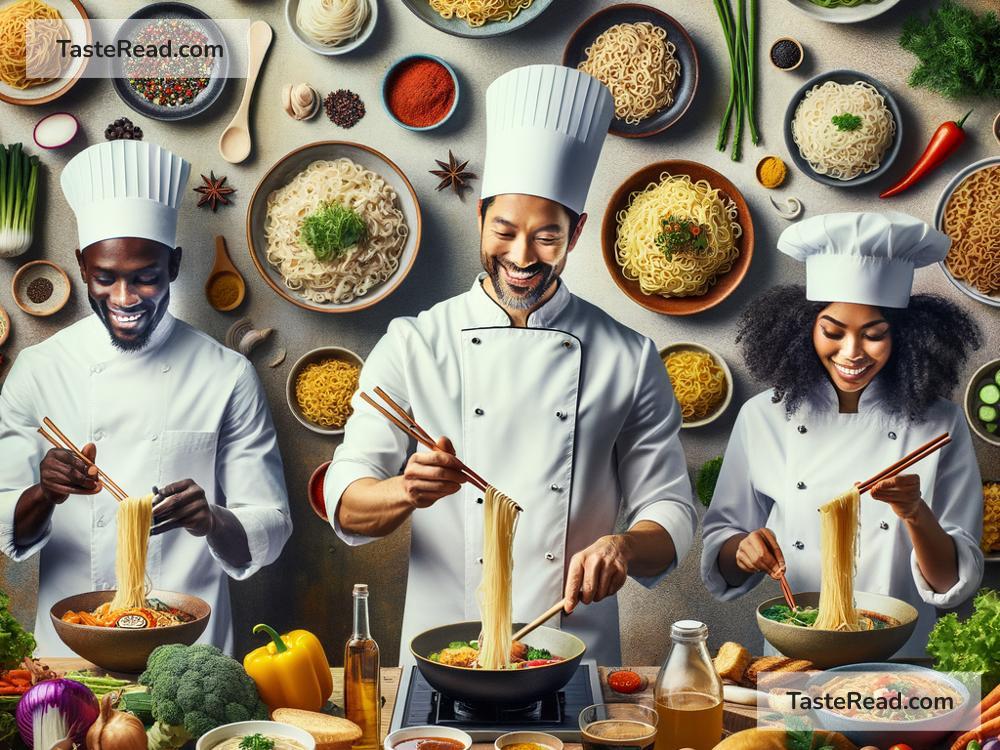Celebrating the Fusion of Cross-Cultural Noodle Dishes in Global Kitchens
Noodles are one of the world’s favorite comfort foods. They’re everywhere—from the street carts of Bangkok to the fine dining restaurants of Rome. These long, thin strands have traveled across borders, carrying flavors, heritage, and stories with them. Over time, they’ve evolved and blended with the cuisines of different cultures, creating exciting and delicious new dishes. In this blog, we’re celebrating the fusion of cross-cultural noodle dishes in global kitchens and exploring why noodles hold a special place in people’s hearts.
The Universal Love for Noodles
Noodles are like food ambassadors. Simple yet versatile, they have the power to connect people from different parts of the world. Whether it’s the comforting slurp of Japanese ramen, the freshness of Vietnamese pho, or the rich creaminess of Italian fettuccine Alfredo, noodles are loved in every corner of the globe. They can be served hot, cold, stir-fried, or even in soups. Add any ingredients—meats, vegetables, herbs—and you’ll have a dish that’s always satisfying.
One reason noodles are so popular is that they’re easy to make. Around the world, people create them from simple ingredients like wheat, rice, or even beans. And because noodles are affordable to produce, they’ve become a staple food for millions. Over centuries, they’ve crossed oceans and borders, blending beautifully with local cooking traditions.
How Cultures Mix Through Food
Fusion food happens when cuisines from different parts of the world come together. Typically, chefs take inspiration from traditional recipes and combine them with new techniques or ingredients. Noodles are perfect for fusion because they’re neutral canvases—they easily absorb flavors, sauces, and spices from different cuisines.
Let’s look at some examples of how noodle dishes have traveled and evolved to reflect cross-cultural influences. Consider ramen, a Japanese dish that combines Chinese-style wheat noodles with a rich broth. Now, ramen has transformed into a global sensation with endless variations. You might find spicy Korean-inspired ramen, creamy Italian-style ramen, or even dishes that feature American toppings like smoked barbecue meats.
Another brilliant example is Pad Thai. While we now recognize it as Thailand’s signature dish, its roots show significant cultural fusion. Historians believe Chinese immigrants brought stir-frying techniques to Thailand, which led to the creation of Pad Thai with rice noodles, tamarind sauce, and tofu. Today, Pad Thai often appears on menus worldwide, with creative spins such as lobster Pad Thai or vegan-friendly versions.
Even Italian pasta has seen fusion influences in global kitchens. Pasta originated in Italy, but did you know Marco Polo supposedly inspired it after his travels through Asia? In return, Italian pasta dishes have evolved globally. Think of dishes like pasta with Japanese miso or spaghetti topped with stir-fried Asian vegetables—every bite is proof of cultures meeting and blending.
Modern-Day Fusion Noodle Dishes
Fusion noodle dishes are trending like never before. In modern kitchens, chefs don’t hesitate to experiment with sauces, spices, and toppings. Here are some examples of creative noodle fusions that celebrate global influences:
-
Kimchi Carbonara: This dish combines Italian pasta with the tangy spice of Korean fermented cabbage, kimchi. Adding parmesan cheese, cream, and bacon to Korean ingredients creates a bold, unique flavor that’s both familiar and adventurous.
-
Mexican Noodle Soup: Also known as “Sopa de Fideo,” this comforting Mexican soup features noodles simmered in a rich tomato broth flavored with cumin and chili. Some chefs around the world have added toppings like Asian cilantro or Japanese seaweed for a fresh twist.
-
Asian Pesto Noodles: Italians love pesto—an herby green sauce made with basil, garlic, olive oil, and nuts. Chefs today are reinventing it by blending Asian flavors like cilantro, sesame oil, and ginger. Toss it with rice noodles or soba, and you’ve got a fusion masterpiece.
-
Indian Spiced Spaghetti: Spaghetti is traditionally Italian, but adding Indian spices like turmeric, cumin, or garam masala turns this dish into a spicy feast. Garnishing it with coriander leaves and a dollop of yogurt adds another layer of flavor.
-
Thai Curry Noodles: Imagine pairing Italian linguine with the spicy, creamy richness of Thai curry. This bold combination allows the noodles to soak up flavors from lemongrass, coconut milk, and red chili paste.
Why Fusion Dishes Matter
Fusion dishes show us that food is more than just sustenance—it’s a form of cultural expression. They reflect how the world is becoming more connected. As people travel, share ideas, and embrace new experiences, their recipes evolve too. Fusion noodle dishes also encourage creativity in the kitchen, pushing chefs and home cooks to experiment and mix their favorite flavors from around the globe.
What’s more, they remind us of the beauty in diversity. By combining recipes from different cultures, we celebrate both our individual traditions and our shared humanity. The fusion of noodle dishes encourages us to learn about new cuisines and appreciate the stories they tell.
Conclusion: A Global Table of Flavors
Noodles will always have a special place in global cuisine because they bring people together. Whether they’re in a traditional recipe or a fusion dish, they carry memories, innovation, and a sense of adventure. As fusion noodle dishes continue to grow in popularity, let’s celebrate their ability to unite cultures and create new traditions.
Next time you enjoy a steaming bowl of noodles, think about the journey it’s taken. You might discover that your favorite noodle dish is much more than food—it’s a symbol of connection and creativity that spans the world.


